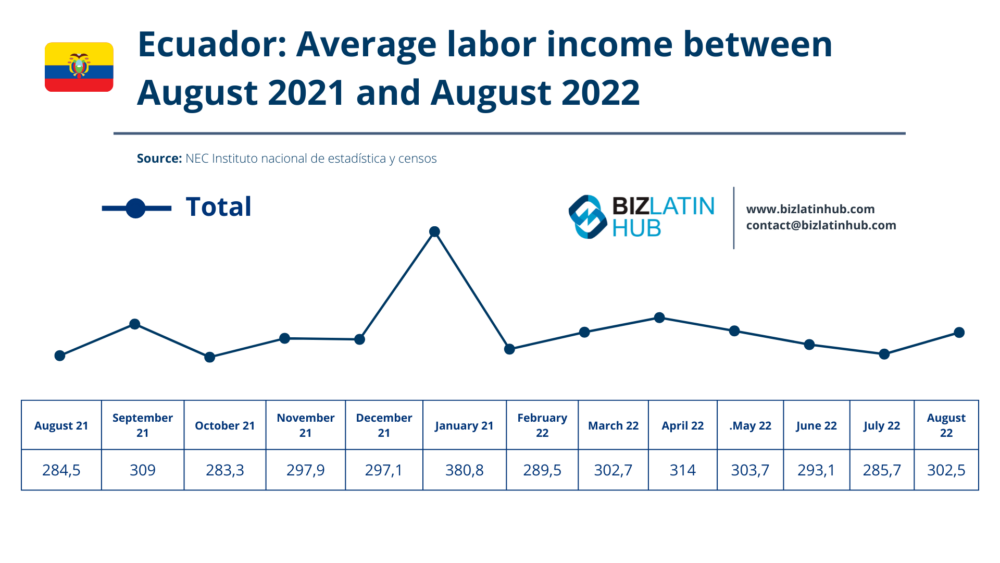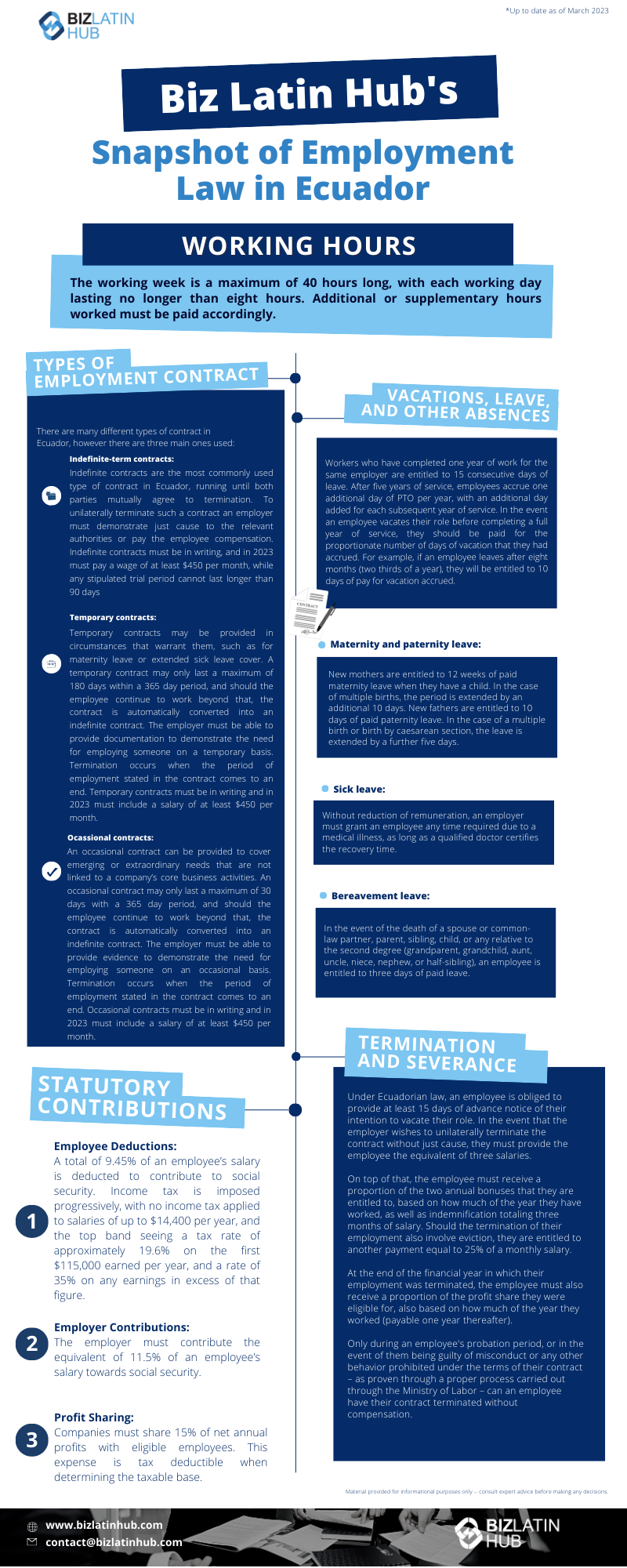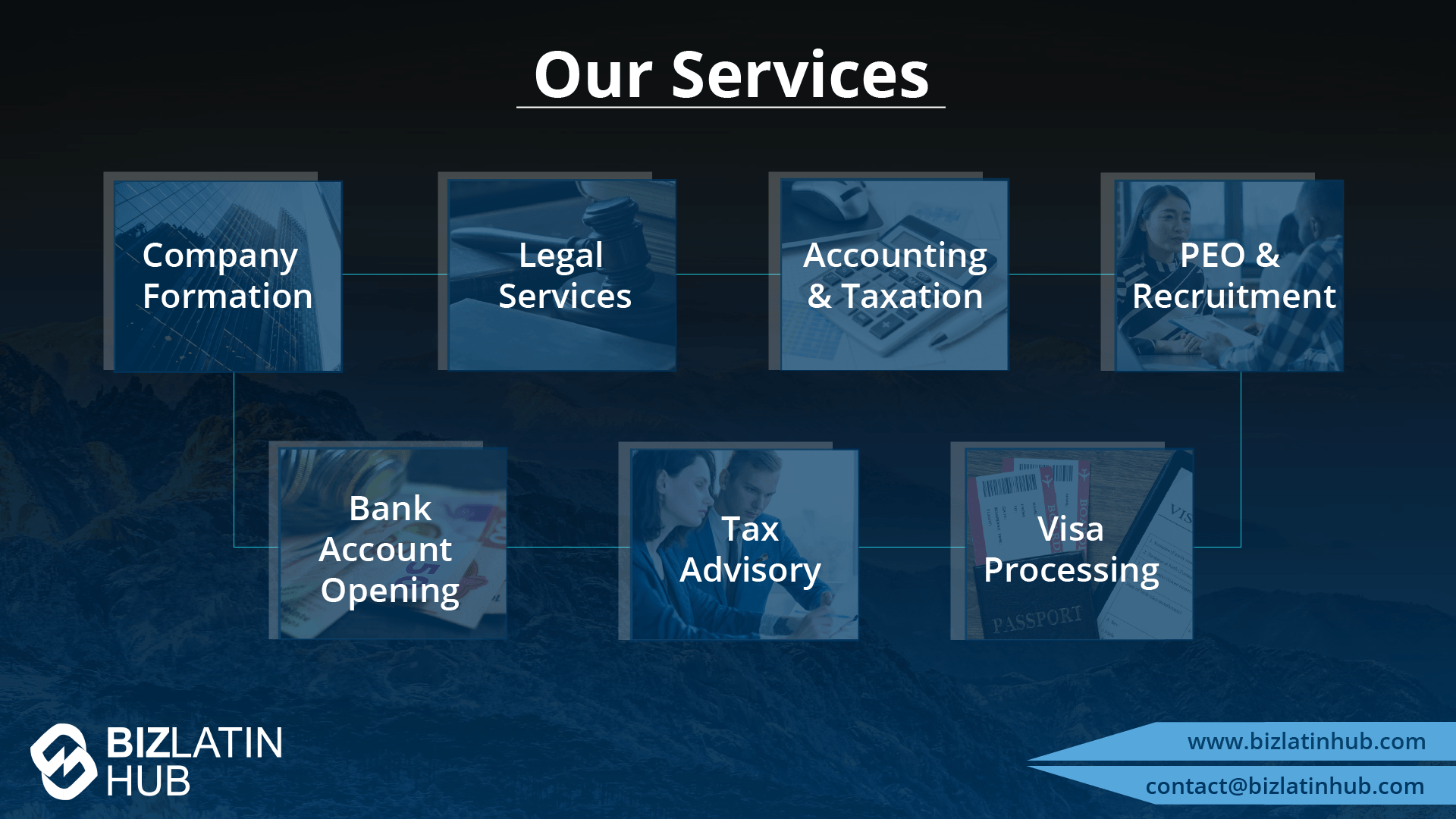As a result of the work-from-home (WFH) phenomenon thrust upon the business world by the pandemic, remote work is here to stay. No profession has benefitted more than IT/tech. These days software developers, designers, engineers, full-stack developers, etc., are all hot-ticket jobs. These people are not always easy to find though, which is why a headhunter and IT recruitment in Ecuador can help you out.
Tech professionals in Ecuador and other parts of Latin America can make a tidy living freelancing their services out to companies in the US and Europe. When it comes to IT recruitment in Ecuador, businesses must have a plan to find and retain the best tech talent in what is an increasingly global labor pool. That’s why in this article we will tell you how to find a headhunter and IT recruitment in Ecuador.
With such a competitive market for tech talent, a specialist headhunter and IT recruitment in Ecuador can be invaluable. There is no shortage of headhunters in the small Andean nation, so knowing how to select the right one is crucial. How you go about choosing a headhunter could make or break your company formation in Ecuador.
What to look for in a headhunter in Ecuador?
Whether your business needs top-table senior management or IT recruitment, you need to know a few things about the headhunter before bringing them on board, especially if your business is new to the jurisdiction. Seek a headhunter who:
- Listens and understands your needs.
- Is a natural, efficient, and culturally-aware communicator.
- Is a specialist in your specific industry.
- Has headhunting experience that speaks for itself.

What to look for in a headhunter?
There are 4 desirable characteristics to look out for when seeking a headhunter in for your company:
- Find a headhunter who listens first, and talks second – Does the person you are considering really listen to you, and wait until you are done speaking to ask pointed questions that get to the heart of the business need? Or are they just waiting for their turn to speak so they can give a mini-speech about why they are so qualified for the role?
- Choose a headhunter who is aware of how different cultures operate – Headhunters and IT recruitment professionals in Ecuador, aside from being bilingual, must understand the business and cultural differences between Latin America and the US and much of Europe.
Businesspeople from the US, for example, like to receive frequent updates, much more so than many Latin American businesspeople would consider necessary. If a headhunter doesn’t understand the differences between two distinct business cultures, then friction and misunderstandings might ensue. - Find a headhunter with industry experience – A good headhunter may be a generalist who is well connected in Ecuador such that if they don’t know an ideal candidate for the position you are trying to fill, they will know someone who does.
A great headhunter is well connected and is also a specialist in a certain field; an industry insider with access to networks, connections, and resources they have cultivated from years in the role. - Find a headhunter in Ecuador with a reputation that speaks for itself – Have they persuaded some high-ranking VPs or executive-level officials to switch teams in the past? Have they poached talent from big-name corporations like Coca Cola, Microsoft, or Alphabet Inc?
If the headhunter you are considering hiring is vague about their past “successes,” then chances are they haven’t got the job done and you should look elsewhere.
It is important to note the subtle but important differences between a headhunter and an IT recruitment business in Ecuador. Headhunters are best used to fill senior-level tech talent or high-level/C-suite positions, and recruiters are best used to help fill entry-level tech talent and middle management-type roles.


Top 5 ways to attract and retain tech talent
Be sure your company is employing these five strategies when searching for the best tech talent and IT recruitment in Ecuador:
- Make sure employees feel valued – Make this a part of your company culture, especially among the younger generations. Young tech talent won’t stay at a business long if they don’t feel appreciated, regardless of how much they are being paid.
- Cast a wider net by committing to diversity – When seeking tech talent, make sure you are searching in the biggest possible labor pool by using inclusive language that appeals to people from diverse ethnic backgrounds, cultures, and geographies.
- Generate buzz about your business online – By increasing your company’s engagement on social media, you are creating a community of people from which you can draw talent. Social media can be an effective way to carry out IT recruitment in Ecuador.
- Make the interview process friendly – Job interviews don’t need to be stuffy or overly serious, so mix up the prodding, thought-provoking questions with light and friendly small talk. Candidates share their experiences with fellow job seekers so make sure it is a positive one.
- Offer a competitive salary/other perks – Paying your tech talent handsomely goes without saying. Be sure to pay slightly more than your competitors and make no secret of it. Remember that tech workers grew accustomed to WFH during the pandemic, and many will want to continue this work arrangement.
FAQs when finding a headhunter in Ecuador
In our experience, these are the common questions and doubtful points of our clients.
Ecuador offers an attractive proposition for tech recruitment in the Latin American market. Its strategic equatorial location provides easy access, while a diverse geography includes the Andes, Amazon Rainforest, and Pacific coastline. The economy is on the rise, driven by sectors like oil, agriculture, and tourism, with a growing focus on technology and innovation. A youthful population with a median age of 28, along with improving English proficiency, contributes to a dynamic talent pool. Ecuador’s universities and technical institutes provide education relevant to the tech industry, and the lower cost of living compared to many Western countries makes it cost-effective. While Ecuador may be less prominent than some Latin American counterparts, it presents an emerging tech talent market worthy of consideration.
Yes, you can certainly hire top tech talent in Ecuador. While it may not be as well-known as some other tech hubs, Ecuador has been making strides in developing its tech industry and cultivating a pool of skilled professionals.
The level of English proficiency among professionals in Ecuador can vary widely. In major cities like Quito and Guayaquil, you are more likely to find professionals with better English skills, especially among younger generations and those working in international or tech-focused industries. In the tech industry specifically, professionals may have a better command of English, as it is often a requirement for working on international projects or collaborating with foreign companies.
Ecuador’s tech industry is steadily growing, albeit on a relatively modest scale. There are around 17,000 developers in the country.
Biz Latin Hub can help you with headhunter and IT recruitment in Ecuador
At Biz Latin Hub, we provide integrated market entry and back-office services throughout Latin America and the Caribbean. We also have trusted partners in many other markets.
Our unrivalled reach means we are ideally placed to support multi-jurisdiction market entries and cross-border operations.
As well as knowledge about headhunters in Ecuador & IT recruitment in Ecuador, our portfolio of services includes hiring, accounting & taxation, company formation, bank account opening, and corporate legal services.
Contact us today to find out more about how we can assist you in finding top talent, or otherwise do business in Latin America and the Caribbean.
If this article on headhunters in Ecuador & IT recruitment in Ecuador was of interest to you, check out the rest of our coverage of the region. Or read about our team and expert authors.






